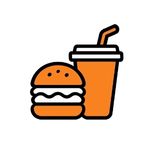
Annual consumer inflation in South Africa climbed to 3.6 percent in October, rising from the 3.4 percent level recorded in September, a development that matched the expectations held by most market participants who had anticipated a modest uptick. This rise, although expected, signals that households may continue feeling pressure during the peak festive shopping season, when spending usually accelerates.
Key Takeaways
- Inflation reaches its highest level in over a year: Consumer inflation has risen to 3.6 percent, marking the strongest reading since September 2024 and adding pressure to household budgets.
- Interest rate cut now faces increased uncertainty: While markets expect a 25 basis point reduction, rising inflation and a more cautious Monetary Policy Committee may complicate the anticipated decision.
- New 3 percent inflation target shapes policy expectations: The National Treasury’s newly adopted target, along with its flexible 1 percentage point margin, suggests that policymakers may maintain a gradual approach to rate cuts rather than adjusting at every meeting.
About Arcadia Finance
Access your loan quickly and confidently via Arcadia Finance. With zero application fees and 19 reputable NCR compliant lenders to compare, you benefit from a seamless process built to match your financial goals.
Inflation Trends and Policy Uncertainty Ahead of South Africa’s Key Interest Rate Decision
This latest figure represents the highest reading of consumer inflation since September 2024, when the rate reached 3.8 percent. The consumer price index increased by approximately 0.1 percent on a month to month basis during October 2025, showing that price pressures have continued to simmer even if the pace remains relatively contained. For context, a 0.1 percent increase sounds small, but when multiplied across millions of consumers and thousands of goods, it translates into meaningful shifts in household budgets.
As the financial community prepares for the final interest rate announcement of the year, this inflation print places additional responsibility on the South African Reserve Bank’s Monetary Policy Committee, which is expected to weigh the data carefully before presenting its decision later in the week. Many financial advisors suggest that consumers should review loan agreements ahead of such decisions, as even small rate cuts can reduce installments on home and vehicle repayments.

Expect a Rate Cut, but Inflation May Complicate the Decision
Economists and financial analysts broadly anticipate that the Committee will opt for a reduction in interest rates of around 25 basis points on Thursday, scheduled for 20 November. However, there is a growing concern among some commentators that the upward movement in inflation could become a decisive factor encouraging the more conservative members of the Committee to forgo the expected cut and maintain the current rate environment.
This potential hesitation has been intensified by the National Treasury’s recent formal approval of an inflation target set at 3 percent, which is intended to guide policy decisions more explicitly in the future. The introduction of this new target represents a historic shift, as South Africa’s inflation band had remained unchanged for over two decades.
Inflation Still Expected to Remain Contained
However, according to analysis from Investec, consumer inflation is not projected to climb significantly further during the remaining months of the year. In addition, the newly announced target has been accompanied by a flexible margin of 1 percentage point, giving policymakers some space to respond to temporary price fluctuations without altering the interest rate stance too hastily. Analysts often advise consumers to track these tolerance bands because they can signal how aggressively the central bank might intervene should inflation deviate.
For this reason, the deviation from the 3.0 percent year on year level in the second half of 2025 is not expected to prompt higher borrowing costs. Instead, the institution maintains that South Africa remains firmly positioned within a broader cycle of rate reductions. This cycle is expected to continue, although not necessarily at every upcoming meeting, and market pricing currently suggests an 88 percent probability of a 25 basis point cut being implemented this week. Historically, similar odds in market pricing have been accurate more than 70 percent of the time, offering a useful indicator for investors.

Drivers of Inflation and Category Movements

Food, Beverages and Household Costs
Several major categories saw an acceleration in their annual inflation rates, including transport, recreation, sport and culture, along with alcoholic beverages and tobacco products. Consumers planning year end holidays may feel this combined pressure, as leisure spending tends to rise sharply in November and December.
By contrast, some areas of consumer expenditure experienced a cooling in inflation, with the most notable declines observed in restaurants and accommodation services as well as in food and non alcoholic beverages. The annual inflation rate for food and non alcoholic beverages eased to 3.9 percent in October, slowing from the 4.5 percent reported in September.
A helpful budgeting tip for households is to focus on lower inflation categories when planning weekly grocery trips, as this offers immediate and practical savings.
A number of individual food and beverage groups also observed a deceleration in price increases. These included vegetables, fruits and nuts, both cold and hot beverage categories, sugar and confectionery products, dessert items and a wide selection of meat products. Vegetables often show faster price drops in spring due to favourable weather patterns boosting supply.
Certain product groups, however, moved in the opposite direction, with increased annual inflation recorded for cereal based goods, fish and seafood items, oils and fats, milk and various dairy and egg products, as well as an assortment of products classified under the miscellaneous group labelled other food. Nutrition experts note that many of these products form part of essential household baskets, which means rising prices can disproportionately affect lower income households.

Meat Products and Protein Trends
Meat inflation, although still elevated, retreated from its highest level in nearly eight years. The annual rate eased to 11.4 percent in October from the 11.7 percent recorded in September. Despite this slight moderation, several types of meat have continued to exhibit double digit inflation, suggesting that households remain under pressure when purchasing protein rich goods.
Examples include stewing beef at 30.9 percent, beef steak at 27.9 percent, beef mince at 27.1 percent, sausages at 17.3 percent, boerewors at 15.6 percent and mutton at 13.4 percent. These increases highlight the persistent impact of production costs, supply chain challenges and broader agricultural pressures.
A tip from consumer organisations is to switch to chicken or plant based proteins for cost relief during high beef inflation cycles.
There were, however, a few encouraging signs for consumers. Items such as corned meat, fresh whole chickens and bacon are now more affordable than they were at the same time last year, offering some relief in an otherwise costly section of the shopping basket.
Shoppers can maximise savings by buying chicken in bulk and freezing it in portions, a common strategy used by budget focused households.

Sugar, Beverages and Grains
Inflation related to sugar, confectionery and desserts slowed to 3.5 percent, marking the lowest result since March 2022 when the figure reached 3.4 percent. Products such as white and brown sugar, jam, peanut butter and chocolate all recorded milder annual price increases. This slowdown is especially significant because sugar often influences the pricing of processed foods across multiple categories.
Price pressures within hot beverages continued to ease, with inflation dipping to 8.8 percent, which represents the softest reading since August 2023 when the rate stood at 6.3 percent. October detailed even softer rises for items such as black tea at 5.1 percent, rooibos tea at 1.6 percent and cappuccino sachets at 1.4 percent.
South Africa is the world’s largest producer of rooibos, which partially explains the lower inflation rate for that beverage.
Cereal products moved in the opposite direction, increasing to 2.0 percent from the 1.6 percent recorded in September. Within this group, samp and maize meal displayed notable increases, with maize meal reaching its highest rate in four months at 10.7 percent. Nonetheless, several items became more affordable, including white rice, brown bread, hot cereals and instant noodles. Consumers may benefit from substituting high inflation maize products with rice or noodles, which currently show better pricing trends.
Although the category of milk, dairy products and eggs remained in deflationary territory, it saw a slight increase in its annual figure from negative 1.6 percent in September to negative 1.5 percent in October. Even with this marginal shift, numerous dairy and egg products remain cheaper than they were a year earlier, including eggs, maize based drink powders and a range of milk varieties. This deflation offers an opportunity for consumers to rebalance diets in favour of more affordable dairy options.
Additional Noteworthy Price Developments
Transport and Fuel Trends
The annual inflation rate for transport turned positive after 13 consecutive months of deflation. The sector rose from negative 0.1 percent in September to 1.5 percent in October. Fuel prices increased slightly by 0.1 percent on a monthly basis, although diesel prices fell by 0.7 percent while petrol increased by 0.2 percent.
This movement resulted in the annual fuel inflation rate climbing to 3.3 percent, marking the first positive reading since August 2024. Although the fuel price adjustment of an 8 cents per litre increase did not significantly affect the overall inflation figure for October, the upcoming fuel price drop of 51 cents per litre in November is expected to lower the monthly inflation rate by around negative 0.1 percent.
Recreation, Culture and Services
The index for recreation, sport and culture rose to 3.4 percent from 2.9 percent in September. A striking finding in this category was that the top 10 books sold across several major retail outlets recorded an annual inflation rate of 59.4 percent, reflecting significant increases in retail book pricing.
Movie ticket prices rose by 15.8 percent over the year, and gym membership fees increased by 10.5 percent over the same period. However, not all services were more expensive, as ticket prices for sporting events declined by 12.6 percent year on year, offering a rare instance of relief in the leisure sector.

Provincial and Income Band Inflation Differences
Regional Variations
Statistics South Africa provided an overview of inflation rates by province as well as across different household expenditure bands. In October, the North West province recorded the highest inflation rate at 4.3 percent, reflecting higher pricing in several key consumption categories within the region. Historically, North West often experiences above average food price inflation due to agricultural supply constraints and distribution dynamics.
The Eastern Cape posted the lowest inflation rate at 3.1 percent, suggesting a comparatively softer rise in consumer prices for residents in that area. Eastern Cape’s lower inflation is partly linked to its strong regional competition in retail, which tends to keep prices more contained.
Income Group Comparisons
Interestingly, while lower income households often experience higher inflation due to the proportion of income spent on essential goods, this pattern did not hold in October. Instead, the wealthiest spending group recorded the highest inflation rate at 3.9 percent, indicating stronger upward pressures in categories that typically affect higher income groups more directly. This trend is commonly seen when luxury services and premium goods undergo sharp increases, which tends to skew inflation upward for top earners.
Conclusion
South Africa’s latest inflation figures have added a layer of complexity to an already delicate monetary policy moment, placing the Monetary Policy Committee in a position where it must balance rising price pressures with the need to support economic activity through lower borrowing costs. Although markets remain confident that a 25 basis point reduction is still likely, the recent adoption of a firm 3 percent inflation target and the slight uptick in price growth may temper the Committee’s enthusiasm for an aggressive easing cycle. Even so, analysts maintain that the country is still progressing through a broader period of gradual rate cuts, suggesting that while the path forward may not be entirely smooth, monetary conditions are slowly shifting in favour of consumers and businesses.
Fast, uncomplicated, and trustworthy loan comparisons
At Arcadia Finance, you can compare loan offers from multiple lenders with no obligation and free of charge. Get a clear overview of your options and choose the best deal for you.
Fill out our form today to easily compare interest rates from 19 banks and find the right loan for you.


